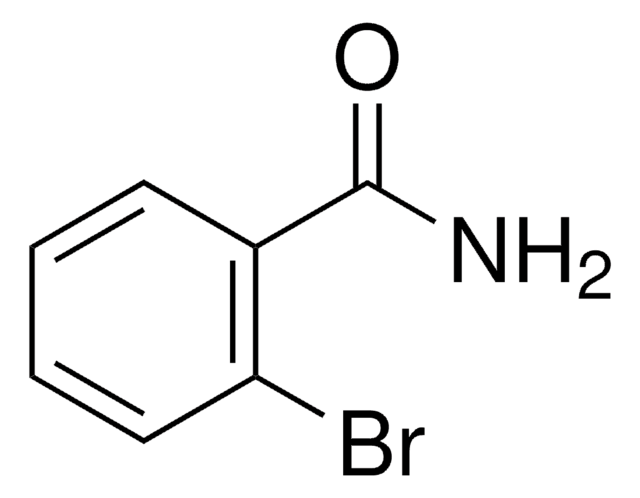266086
Kupfer
powder, <425 μm, 99.5% trace metals basis
Synonym(e):
Cu
Anmeldenzur Ansicht organisationsspezifischer und vertraglich vereinbarter Preise
Alle Fotos(3)
About This Item
Empirische Formel (Hill-System):
Cu
CAS-Nummer:
Molekulargewicht:
63.55
EG-Nummer:
MDL-Nummer:
UNSPSC-Code:
12141711
PubChem Substanz-ID:
NACRES:
NA.22
Empfohlene Produkte
Qualitätsniveau
Assay
99.5% trace metals basis
Form
powder
Eignung der Reaktion
core: copper
reagent type: catalyst
Widerstandsfähigkeit
1.673 μΩ-cm, 20°C
Partikelgröße
<425 μm
bp
2567 °C (lit.)
mp (Schmelzpunkt)
1083.4 °C (lit.)
Dichte
8.94 g/mL at 25 °C (lit.)
SMILES String
[Cu]
InChI
1S/Cu
InChIKey
RYGMFSIKBFXOCR-UHFFFAOYSA-N
Anwendung
Catalyst for the cyclization and coupling reactions; e.g. Ullmann coupling reactions, preparation of cyclopropanes, decomposition of diazoketones or diazoesters, insertion to C-O bonds, [3 + 2] cycloaddition of terminal alkynes and azides, hydrogenation.
Signalwort
Danger
H-Sätze
Gefahreneinstufungen
Aquatic Acute 1 - Aquatic Chronic 1 - Flam. Sol. 1
Lagerklassenschlüssel
4.1B - Flammable solid hazardous materials
WGK
WGK 2
Flammpunkt (°F)
Not applicable
Flammpunkt (°C)
Not applicable
Persönliche Schutzausrüstung
Eyeshields, Gloves, type P3 (EN 143) respirator cartridges
Hier finden Sie alle aktuellen Versionen:
Besitzen Sie dieses Produkt bereits?
In der Dokumentenbibliothek finden Sie die Dokumentation zu den Produkten, die Sie kürzlich erworben haben.
Kunden haben sich ebenfalls angesehen
Seiko Ishida et al.
Proceedings of the National Academy of Sciences of the United States of America, 110(48), 19507-19512 (2013-11-13)
Copper is an essential trace element, the imbalances of which are associated with various pathological conditions, including cancer, albeit via largely undefined molecular and cellular mechanisms. Here we provide evidence that levels of bioavailable copper modulate tumor growth. Chronic exposure
R Squitti et al.
Neurology, 67(1), 76-82 (2006-07-13)
To assess whether serum copper in Alzheimer disease (AD) correlates with cognitive scores, beta-amyloid, and other CSF markers of neurodegeneration. The authors studied copper, ceruloplasmin, total peroxide, and antioxidants levels (TRAP) in serum; beta-amyloid in plasma; and copper, beta-amyloid, h-tau
Magnus Andersson et al.
Nature structural & molecular biology, 21(1), 43-48 (2013-12-10)
Heavy metals in cells are typically regulated by PIB-type ATPases. The first structure of the class, a Cu(+)-ATPase from Legionella pneumophila (LpCopA), outlined a copper transport pathway across the membrane, which was inferred to be occluded. Here we show by
Hiroshi Sato et al.
Science (New York, N.Y.), 343(6167), 167-170 (2013-12-18)
Carbon monoxide (CO) produced in many large-scale industrial oxidation processes is difficult to separate from nitrogen (N2), and afterward, CO is further oxidized to carbon dioxide. Here, we report a soft nanoporous crystalline material that selectively adsorbs CO with adaptable
Stephen G Kaler et al.
The New England journal of medicine, 358(6), 605-614 (2008-02-08)
Menkes disease is a fatal neurodegenerative disorder of infancy caused by diverse mutations in a copper-transport gene, ATP7A. Early treatment with copper injections may prevent death and illness, but presymptomatic detection is hindered by the inadequate sensitivity and specificity of
Unser Team von Wissenschaftlern verfügt über Erfahrung in allen Forschungsbereichen einschließlich Life Science, Materialwissenschaften, chemischer Synthese, Chromatographie, Analytik und vielen mehr..
Setzen Sie sich mit dem technischen Dienst in Verbindung.




